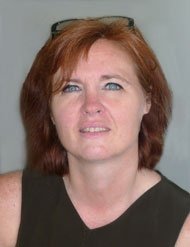 Moving right along in our Q&A series, today we feature an interview with Pejay Belland, director of marketing, admissions and financial aid for degree programs at INSEAD. Belland worked in the pharmaceutical and music industries before entering higher education at INSEAD,where she has spent the majority of her career.
Moving right along in our Q&A series, today we feature an interview with Pejay Belland, director of marketing, admissions and financial aid for degree programs at INSEAD. Belland worked in the pharmaceutical and music industries before entering higher education at INSEAD,where she has spent the majority of her career.
Since joining INSEAD in 2007, she has held roles in career services, MBA marketing and program management. She was appointed to her current position as director of marketing, admissions and financial aid for INSEAD’s degree programs in May 2011. The British-born Belland is based out of France but manages a global team that extends to INSEAD’s campuses in France, Asia and the Middle East.
We’re grateful to Belland for making time to shed some light on the admissions process at INSEAD, including each stop a candidate’s application makes before the Admissions Committee makes its final decision. She also shares some of the ways INSEAD plans to mark the 10th anniversary of its Global Executive MBA and alludes to some new initiatives on tap for the MBA program. Though it’s too early to provide details on those, her office promises to fill us in once they’re finalized.
Clear Admit: What’s the single most exciting development, change or event happening at INSEAD this coming year?
Pejay Belland: On the program side, we’re excited to be celebrating another milestone in INSEAD’s history, the 10th anniversary of our Global Executive MBA. Celebrations began this summer as alumni from five and 10 years out came back for their reunion and to attend electives of the current EMBA class. They will culminate with the GEMBA 2014 Graduation in December.
It’s amazing to see how the program has grown over the past decade, with classes now run in Europe, Asia and the Middle East. We’re also looking forward to taking the program into the next decade now, as we prepare to onboard our new classes of 2015!
We also have a couple of new initiatives coming up for our MBA program, but it’s too early to talk about these yet.
CA: What is the one area of your program that you wish applicants knew more about?
PB: Our applicants are usually pretty well informed about the program, but one area that I find particularly interesting is the number of ventures that start out as a result of Entrepreneurship class projects. Our entrepreneurship electives are extremely popular and, although the percentage of students who become entrepreneurs after graduation is relatively small at around 5 percent, we estimate that up to half of our alumni become entrepreneurs at some point in their career.
Of those students who do choose the entrepreneurship route shortly after graduation, there are many success stories resulting from ideas or projects in our start up or acquisition classes: the Frog chain of pubs, BlaBlaCar and American Haircare to name just a few. This testifies to the inspirational environment of the program both from a learning perspective and, of course, also from a peer-to-peer perspective, as many students meet their future business partners during their time here.
CA: Walk us through the life of an application in your office from an operational standpoint. What happens between the time an applicant clicks “submit” and the time the committee offers a final decision (e.g. how many “reads” does it get, how long is each “read,” who reads it, does the committee convene to discuss it as a group, etc.).
PB: Sure. Well, all of the applications submitted are first checked for completeness, and then they are passed on to a reader for a first evaluation. We have a team of readers who work with INSEAD. Most have been with us for many years so have read thousands of applications! The readers now read and evaluate the applications online, and every application is read thoroughly (readers may spend up to 45 minutes on some applications).
A small pre-selection committee then convenes to look at the readers’ evaluations and make a decision whether to invite the candidate to interview or to reject. If a candidate goes through to interview, once the interviews have taken place, the application is read (along with the interview reports) a second time by a different reader and sometimes even a third time. The final evaluation and an overview of the application is then presented to the Admissions Committee for a final decision.
CA: How does your team approach the essay portion of the application specifically? What are you looking for as you read the essays? Are there common mistakes that applicants should try to avoid? One key thing they should keep in mind as they sit down to write them?
PB: The essays help us to understand who a candidate really is and to get a glimpse into their personalities through their stories. One of the most common mistakes an applicant can make is to tell us what they think we want to hear.
There’s no magic formula. We’re just genuinely interested in understanding a candidate’s motivations for doing an MBA, as well as understanding who they are and how they are likely to contribute to the program.
Candidates should bear this in mind as they sit down to write their essays – we value honesty and sincerity, and preparing the essays is a great opportunity for self-reflection.






